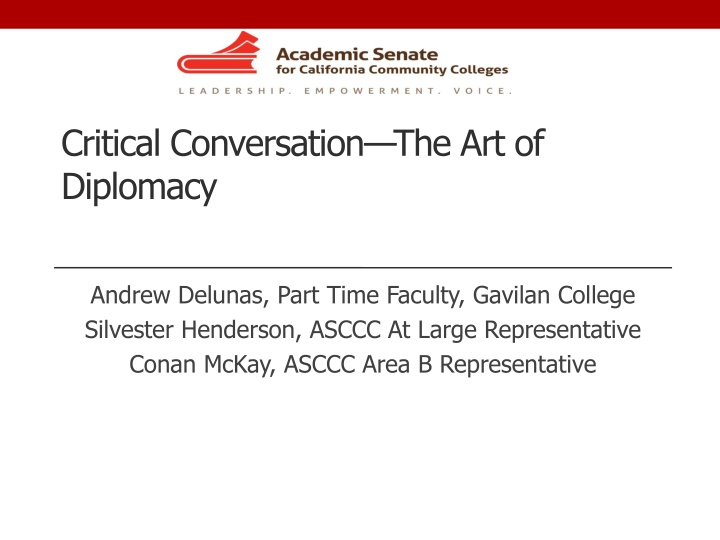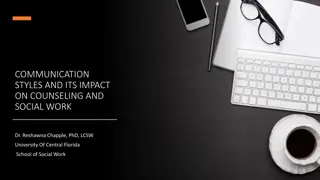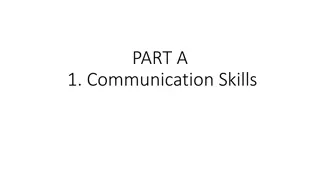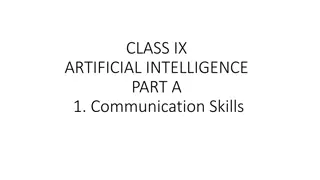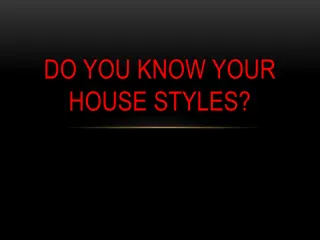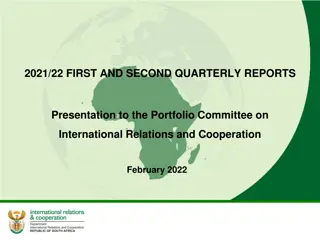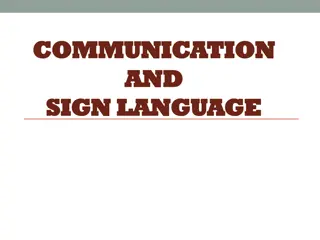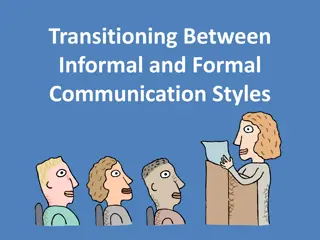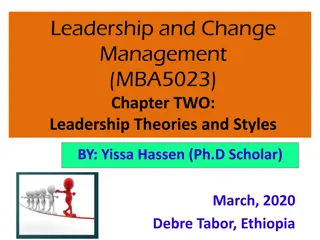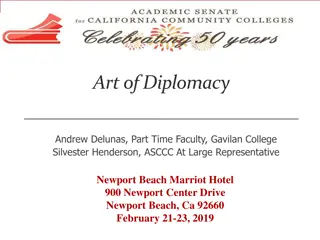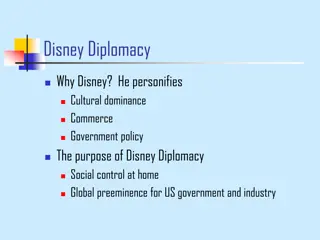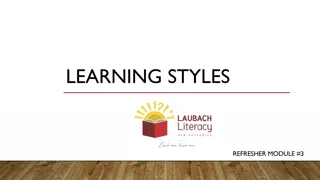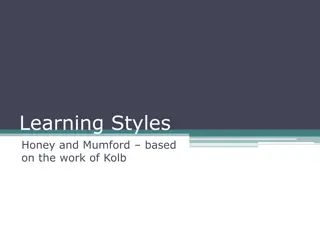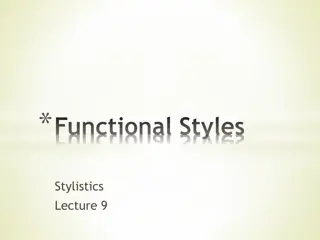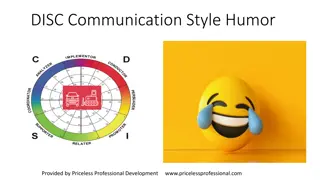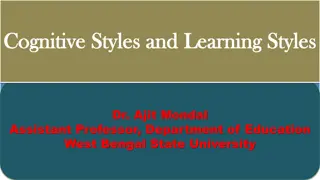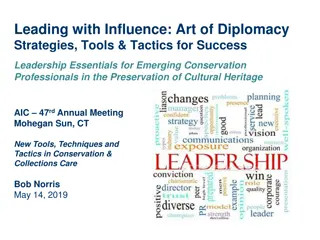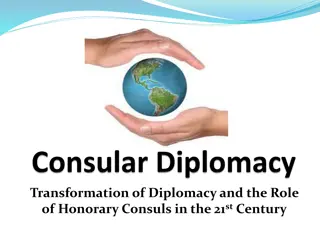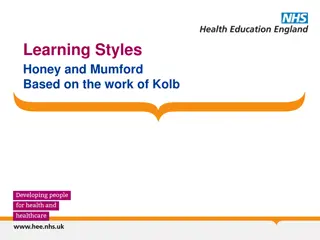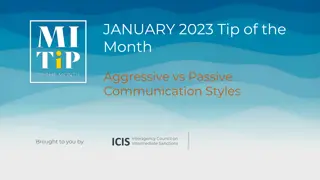Mastering Communication Styles for Effective Diplomacy
Explore different communication styles such as passive, aggressive, passive-aggressive, and assertive to enhance your diplomatic skills. Learn how each style influences interactions and strategies for effective communication in various scenarios.
Download Presentation

Please find below an Image/Link to download the presentation.
The content on the website is provided AS IS for your information and personal use only. It may not be sold, licensed, or shared on other websites without obtaining consent from the author.If you encounter any issues during the download, it is possible that the publisher has removed the file from their server.
You are allowed to download the files provided on this website for personal or commercial use, subject to the condition that they are used lawfully. All files are the property of their respective owners.
The content on the website is provided AS IS for your information and personal use only. It may not be sold, licensed, or shared on other websites without obtaining consent from the author.
E N D
Presentation Transcript
Critical ConversationThe Art of Diplomacy Andrew Delunas, Part Time Faculty, Gavilan College Silvester Henderson, ASCCC At Large Representative Conan McKay, ASCCC Area B Representative
Temperature Check New Part Time Faculty Five years or less Six to Ten Years Ten Years plus Serve on local college committees
Outcomes Communication Styles Communication with style and grace Critical Conversations
Communication Styles Passive often act indifferently, yielding to others. often display a lack of eye contact, poor body posture and an inability to say no. Passive communicators usually fail to express their feelings or needs, allowing others to express themselves.
Communication Styles continued Aggressive is emphasized by speaking in a loud and demanding voice, maintaining intense eye contact and dominating or controlling others by blaming, intimidating, criticizing, threatening or attacking them, among other traits. Aggressive communicators often issue commands, ask questions rudely and fail to listen to others. But they can also be considered leaders and command respect from those around them.
Communication Styles continued Passive Aggressive Most passive-aggressive communicators will mutter to themselves rather than confront a person or issue. They have difficulty acknowledging their anger. Use facial expressions that don t correlate with how they feel and even deny there is a problem. Passive-aggressive communicators are most likely to communicate with body language or a lack of open communication to another person, such as giving someone the silent treatment, spreading rumors behind people s backs or sabotaging others efforts. Passive-aggressive communicators may also appear cooperative, but may silently be doing the opposite.
Communication Styles continued Assertive Thought to be the most effective form of communication. The assertive communication style features an open communication link while not being overbearing Assertive communicators can express their own needs, desires, ideas and feelings, while also considering the needs of others. Assertive communicators aim for both sides to win
Communication with Style and Grace The longer one is talking the less their audience is paying attention Listening for retention means listening without being distracted and committing the information to memory the maximum attention span is no longer than 10 minutes Listening with comprehension means listening without becoming distracted. It s possible for adults to listen with comprehension the maximum attention span is no longer than 20 minutes The longer we talk, the less people pay attention. Brevity is often one of the most under used tools in communication
Critical Conversations When engaging in Critical / Difficult Conversations it is important to keep the following in mind Positive Tone Stay on topic Keep emotions out as much as possible for both parties. Important to separate facts and opinions Agree to a clean path forward
Questions, Thank you Andrew Deluna adelunas@hartnell.edu Silvester Henderson shenderson@losmedanos.edu Conan McKay cmckay@mendocino.edu
